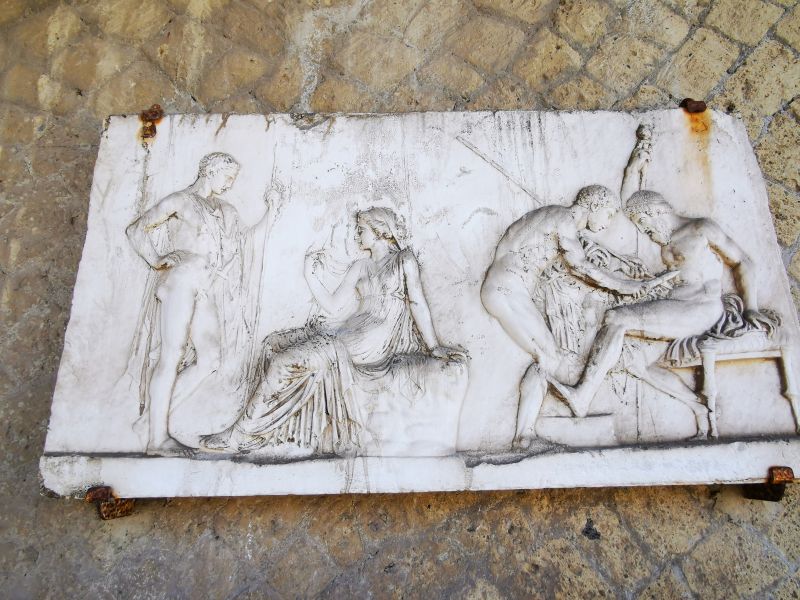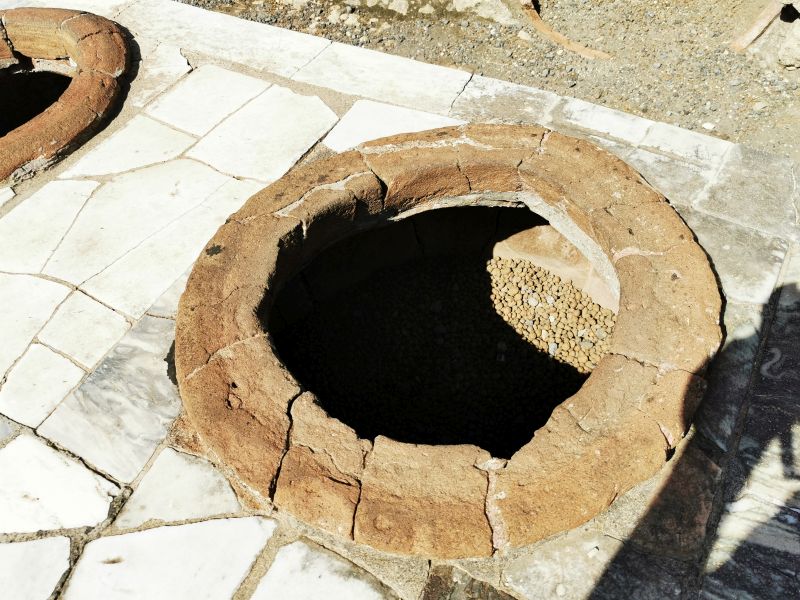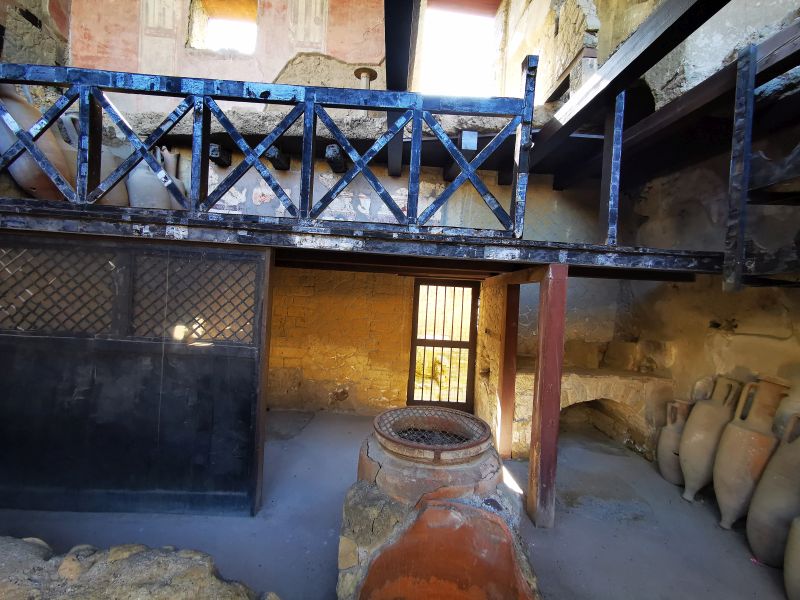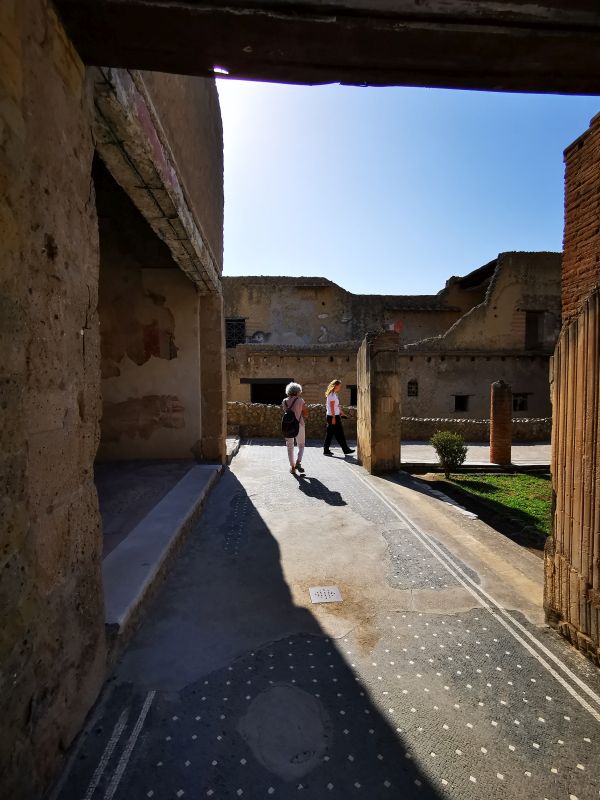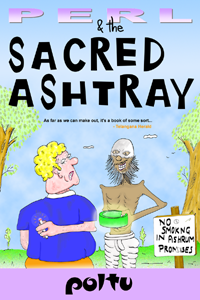Last month I turned 60 and Blandine gave me the best birthday present ever... I had been dreaming of seeing Pompeii ever since I was a little kid and had read about it in history books, but I never seemed to get around to it. Blandine organized a trip without telling me. Not any old rushed touristy tour, but a leisurely, in-depth tour where I could wallow in archeology until it came pouring out of my ears. And while we were at it, we spent several days taking in the nearby city of Naples, Mount Vesuvius, the island of Procida... and... Herculaneum!
I'll cover the other places in future posts, but I'll start off with Herculaneum. Smaller and less famous than Pompeii, it is in many ways even more impressive. On the other side of Mount Vesuvius from Pompeii, it too got covered in ash in the volcanic eruption of 79AD and became a capsule in time. Unlike Pompeii, it was covered in a different type of material, that preserved wood and organic matter, with the result that you can even see beds and tables and even food and scrolls, albeit carbonized.
To get to Herculaneum, you land in Naples, as we did, and then take a train or a metro that goes to Herculaneum, Pompeii and Sorento. Make sure you take the right train, because all of them don't stop in Herculaneum. We made that mistake, and watched Herculaneum flash by our horrified eyes as the train did not stop there. We had to get down in Pompeii and take a train back. Luckily, no one checked our tickets, as we had taken tickets only up to Herculaneum. We could of course have done the two places in the reverse order, but then we had booked a hotel for that night in Herculaneum.
We stayed that night at Ercolano, which is the modern town abutting the archeological site of Herculaneum. Ercolano, by the way, is what the Italians call Herculaneum. We stayed in a luxurious B&B called 7cento Vesuviano, which is just a short walk from the entrance of the archeological site. It is an ancient villa which the owner has converted into a B&B. That afternoon, we took a bus ride to see Mount Vesuvius (see next post). We spent the evening rooting around Ercolano, which is a charming little town with a couple of minor tourist attractions and okay-ish food.
Early next morning, 8:30 AM, we were at the gates of Herculaneum, right when it opens, to avoid the tourist rush that happens later in the day. We spent a major part of the day there, and took an evening train to Pompeii. More on that in the next post.
These are the pics of Herculaneum:
OK, at the bottom of the ramp, entering Herculaneum proper.
The town square, at eye level. The same one viewed in previous photos from the top of the ramp.
An opulent villa with hanging decorations: discs of marble with carvings. No, I don't think the wire is original. I think they found these on the floor and re-suspended them with modern wires.
A bakery, with grinding stones and ovens.
A restaurant. That is the serving counter, with embedded amorphas that was used to store the heated food that was served to customers.
Another restaurant. Lots of restaurants here, a bit like modern Italy.
Close up of the serving counter.
A room with sunken mosaic flooring.
Original window grills, still surviving
Closeup of the drainage system. Ignore the modern rainwater pipe. The waste water exited the house below ground level and entered the municipal gutters.
The atrium of a villa, with rainwater harvesting. The rain fell into the atrium from the open roof, and was collected in this fountain, and stored in cisterns on the side.
The grill of the underground cisterns
These modern looking wooden partitions were used to divide the atrium into one large guest area, or a private room and a smaller guest area. This is what is special about Herculaneum, you can still see fixtures like this.
A still-surviving bed
The open roof of the atrium.
A shop. You can see the wooden mezzanine floor, the amorphas of wine and olive stored to one side.
A grand room with the frescos well-preserved on the wall.
a street in Herculaneum
A water trough
Another shop, with slotted shelves for holding the amorphas and a weighing scale
A bit of Roman advertisment on outside walls of a building.
Parting view.























